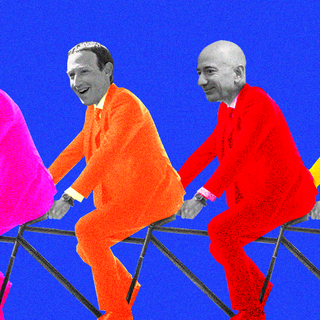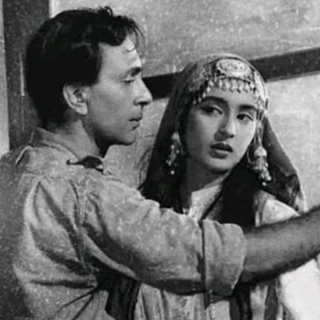
Why We Laugh at Cheesy Jokes
These anti-jokes thrive on their simplicity; they don’t need the perfect punchline wit, or a crafty delivery style.

Around 1000AD in Britain, a joke piqued people’s interest: What hangs at a man’s thigh and wants to poke the hole that it’s often poked before? Answer: A key.
This was clearly meant to spark laughter, but I find my lips curled with a faint hint of weary disgust. It’s a joke but a lame one at that. More modern renditions of your typical bad zingers will inspire a light snicker. But why do we find these droll attempts at humor funny? Why are corny, formulaic attempts at humor so popular — that they’ve even caught on with cultural terminologies in the form of “dad jokes” or otherwise? The Japanese even have a name for it: oyaji gyagu. Corny, dad jokes that young people respond to with a blank stare.
It may help to break down the construct of a bad joke to make sense of its dubious allure. These jokes thrive on their simplicity; one doesn’t need the perfect punchline, a crafty delivery style, or an endless shelf life.
Some researchers even went on to describe this particular brand of amusement — one that is spontaneous and involuntary. This display is titled the Duchenne laughter, named after scholar Guillaume-Benjamin-Amand Duchenne de Boulogne in the mid-19th century; it is best characterized as the smile that comes in response to tickling or playing around. While not all laughter at cheesy jokes may be a Duchenne one, we know some of it definitely fits the bill.
Research around what makes a joke funny is quite ambiguous; there seems to be no unequivocal theory around the charm of cheesy quips.
A clue can be found within the theory of incongruity. “People laugh at the juxtaposition of incompatible concepts and at defiance of their expectations—that is, at the incongruity between expectations and reality,” writer Giovanni Sabato explained. Why did the pie go to the doctor? He was crumpy. See, the pie can’t go to a doctor, hence the absurdity. A corollary to this also means that the incongruity, when resolved, leads to laughter because the person discovers an unexpected solution by way of the punchline. “When an individual grasps a double meaning in a statement and thus sees the statement in a completely new light,” Sabato adds, that’s when the wry smile comes. Arguably, these jokes play with incongruity largely through linguistics and wordplay, rather than subject matter.
The idea of finding joy in contradictions assumes the gap is rather innocuous, so it becomes easier to look, and laugh, at these gaps in reality. This is what experts understand as a “benign violation”; when the ethical or social norm that is violated is not very offensive or problematic. In other words, any non-serious violation of a social more sets the stage for humor. Here, the person telling the joke assumes an important role. The identity of the person matters, for it decides if a cheesy joke is taken in jest.
Building on this, some experts argued how ideologically rewarding “mistakes” can be. “Humor is related to some kind of mistake. Every pun, joke, and comic incident seemed to contain a fool of some sort—the ‘butt’ of the joke,” said Matthew M. Hurley of Indiana University Bloomington. It is the“emotional reward for discovering and thus undoing mistakes in thought. We don’t enjoy making the mistakes, we enjoy weeding them out.” The joy of weeding out a bad joke, or destroying it into pieces, sometimes offsets the endeavor of listening to it.
Related on The Swaddle:
Why We Have Many Different Laughs
This aligns a little with one theory proposed by Sigmund Freud. Laughter in ways more than one acts as a way to release pent-up “nervous energy.” If the said punch line carries the themes of tabooed social topics, is sexual in nature, or just largely inappropriate as a whole, we substitute hostility or disgust with humor. In other words, “the energy being expended to suppress inappropriate emotions… is no longer needed and is released as laughter,” Sabato added. This resolution of tension of the subject matter is done through a cheesy punchline, making lame jokes the belle of the comic ball.
Moreover, there’s a hint of superiority in dismissing a conventionally bad joke. Recognizing a discrepancy is a show of ability and one’s caliber; it becomes a way to elevate one’s social status.
Arguably, a bad joke is also a safe one, so laughing at these zingers responds to our desire for security. They become a “reliable indicator of such relaxed, safe times and paved the way to playful emotions,” the researchers said.
Of course, the theory of why we laugh at cheesy jokes, or any humor at all, answers as many questions as it opens. Experts would concur that there are loopholes and caveats in every humor-related theory. Giovannantonio Forabosco, a psychologist and an editor at an Italian journal devoted to studies of humor (Rivista Italiana di Studi sull’Umorismo, or RISU), agreed: “We certainly haven’t heard the last word.”
One assertion with a modicum of comfort is about the nature of humor in itself — laughter, researchers say, has indubitable evolved as a way to enhance connectedness in society. By that logic, any joke — your good old dad humor, cheesy zingers — is all fulfilling the desire of belonging.
They say comedy is tragedy plus time. Tragedy may as well be a bad sense of humor. I bow in front of humor researchers who express a word of caution about dwelling too deep on jokes and why they are funny: “if we dare to dissect why a joke is even funny, it’ll take all the humor out of it.”
Saumya Kalia is an Associate Editor at The Swaddle. Her journalism and writing explore issues of social justice, digital sub-cultures, media ecosystem, literature, and memory as they cut across socio-cultural periods. You can reach her at @Saumya_Kalia.
Related


Why We Find Cringe Couples Fascinating
